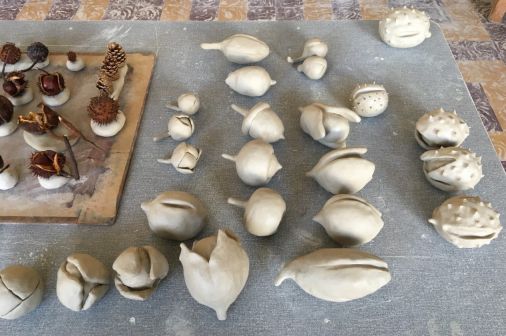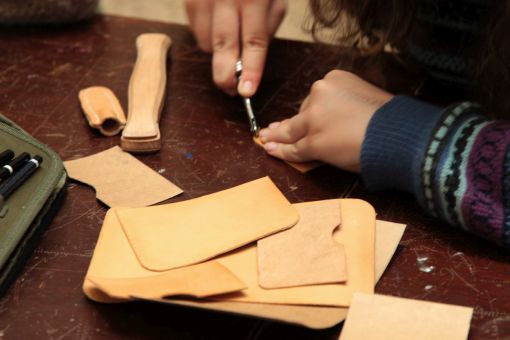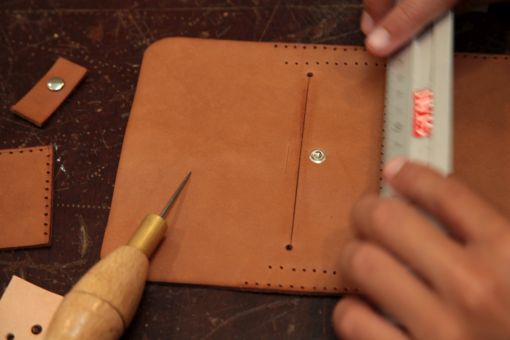September is not only for our students at the Academy an exciting time, it's also the moment a lot of teachers, some of then for the first time, get ready for the start of a new and thrilling school year. How does it feel to stand in front of the classroom on the first of September? Are you nervous every time again or do the nerves get better the longer you have been teaching? And why have you chosen the teaching profession in the first place? All these questions and more I asked to two of alumni of our Educational Master Fine Arts at the Academy? Won't you read along?
You have now been a teacher for over 7 years. Is September still just as exciting as the very first time you stood in the front of a classroom?
In general I think a teacher is less and less nervous on that first day of school as the years go by, especially when they get to teach the same courses they have known for a couple of years. I teach new courses almost every year and see fresh faces in different classes, which makes for a thrilling first of September in my case. This year I start in a new school, but get to teach courses I have taught before. And that I find less nerve wracking than teaching a completely new course in a school that is familiar to me. So I would say it truly depends on the situation!
Which courses do you teach and to what grades?
This year I teach in two different schools, both of them Steinerschools. I teach Leatherworking in the fourth grade and Textile atelier in the fifth and sixth grade (all ASO) in the Steinerschool in Berchem. Besides that I also teach Visual Arts in the third, fourth, fifth, sixth and seventh grade BSO in the Steinerschool in Lier.
Can you shortly describe two of these courses, perhaps the ones that are closest to your heart?
Leatherworking is an artisanal course. The students get to know the material by means of an imposed workpiece and start their own design based on this. This is actually a new course in school. After a number of hours handicraft became available, I introduced a learning atelier in cooperation with the school. This was also inspired by the fact that I myself work with leather outside my job as a teacher. That I had the chance to shape a brand new curriculum from my personal passion and job experience is truly fantastic.
In the Textile atelier in the fifth grade, we take on assignments from inside or outside the school and work on and finish these during a 12-week period, for six lessons a week. The assignments vary from beanbags to gym bags and lab coats. We accept all assignments that require us to deliver between 50 and 200 pieces and only the material itself has to be purchased by the client who put in the request. For a lot of students this is the first time that create something that is not for them to use of take home. So it’s not about their own creativity, but rather about functioning as part of a whole, all working towards the end result. The students get an idea of how items are produced on a larger scale and how every link in the team is indispensable. As a teacher I like to take a step back during these assignments. Of course I explain what should happen every step of the way, but I mostly focus on providing work sheets so that students can get to work independently. At that moment I am not teaching in a traditional way (giving information at the front of the class) but rather I am delegating, watching over the production process and thinking of solutions when problems arise. I have learned that the students at that age are ready to take on that responsibility. It’s a wonderful way of teaching, being right in the middle of it all. You notice how students take on different roles and support each other to deliver the best result possible. Some will come forward as leaders, sometimes surprisingly, and other are great at taking guidance and working meticulously to finish the assignment on time.
Let me finish with a short anecdote about the course Craftsmanship that I taught the second graders in the Steinerschool in Berchem last year. For an entire school year (two lessons per week), the students had the assignment to make a sweater, which asks a great deal of perseverance and commitment from the students. They have to focus, because every single step is important. For some students it was a real struggle. But eventually they were all immensely proud of the sweater they ended up with. I remember one of the toughest boys in the class wearing his sweater to school for over three weeks after it was finished. I thought that was really touching!
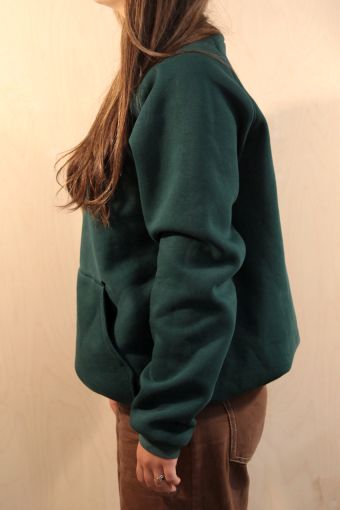
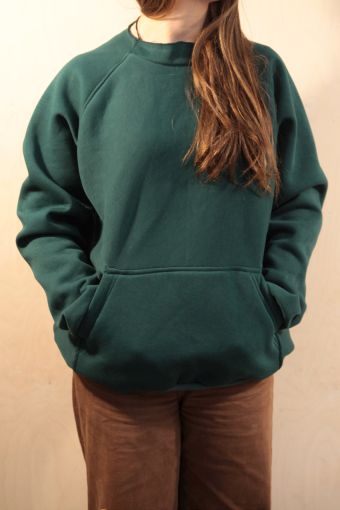
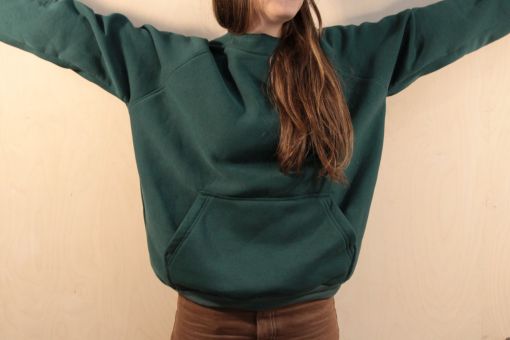
Can you shortly describe how you ended up in the teaching profession?
I had an atelier where I made leather goods. I greatly enjoyed working with my hands, but thought the work in the atelier was quite lonely. I know the principal from the Steinerschool in Berchem and after bumping in to him on the market one day, he told me that they were looking for a replacement in the school. One thing led to another and not two days after this encounter I was standing in front of a class for the first time.
What contribution does the Educative Master have on your classes?
The course has given me more courage and strengthened my idea that I know what I’m doing in the classroom. As absurd as the idea of detailed lesson preparations may be, linking the content of my lessons to the assigned lesson goals has given me a strong basis for every class I teach. By describing learning goals, the usefulness of your course becomes much clearer. It’s also remarkable that students always seem to feel whether you have a strong vision and purpose as a teacher. If they notice you have this covered, the enthusiasm and atmosphere in the classroom is immediately tangible. Furthermore, the course gave me a great number of tips on a good lesson build-up and lots of inspiration to put this into action. All the students and teachers at the Academy were enjoyable people, each with their own interesting background and reason for being there. I always looked forward to the classes.
How important are art courses in our educational system according to you?
Very important. I completely agree with the Steinerschool’s vision on education. They are convinced that it is not only necessary to speak to a student’s head, but also to its hands and heart. Throughout their entire high school experience, our students are introduced to different materials. Whether it’s clay, fabric, wood, wool, leather, copper, rock…, every material asks for a different approach and every students reacts to them differently. One material may be your thing, but another does not speak to you at all. During various craft subjects you learn more about yourself, both positively and negatively. And it ensures that you learn with your hands and not only your head. Hands can be at least as intelligent and I think there should be more emphasis on that in our world. And then there’s also the heart. I believe experiencing beauty is extremely important. Not only the beauty of art, but also of what surrounds us: the beauty of colors, materials, music and words. When students can be touched by beauty, they learn how to respect and be in awe of the world. Something that is perhaps more important today than ever.
